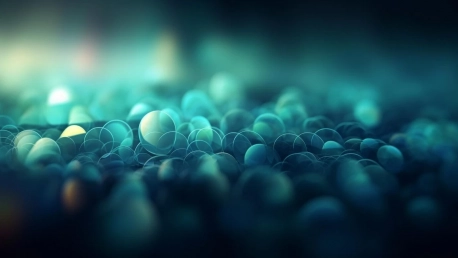Nanoparticle technology stands on the cusp of a revolution thanks to an innovative assembly technique developed by researchers at the Gwangju Institute of Science and Technology (GIST) in South Korea. The current landscape of device fabrication pivots on the precise and rapid integration of nanomaterials onto wafer surfaces, and the new “one-shot” self-limiting assembly offers a transformative solution. Especially critical for the uniform application of sub-100 nm particles, this method aligns perfectly with industrial demands for efficiency and scalability. Traditional techniques are being outpaced as the GIST method becomes ingrained in the domain like never before, striving to elevate the functional capacities of electronic and photonic devices.
Understanding the “One-Shot” Self-Limiting Assembly
Unveiling their nature-inspired process, the GIST researchers have taken a proton-assisted electrostatic assembly technique to new heights. Reflecting upon the underwater adhesion strategies of mussels, they have created a system that guides the rapid and consistent formation of nanoparticle monolayers. This not only simplifies the deposition process but also substantially reduces the time consumed by conventional methods. Seconds replace hours without compromising the uniformity and quality of the nanoparticle distribution. A method that once seemed to crawl now sprints, effectively bypassing former limitations and establishing a new gold standard for nanoassembly.
Breakthrough in Rapid and Uniform Deposition
The leap from lab to industry often suffers from a mismatch in scale and speed, but GIST’s process narrows this gap significantly. Coating a 2-inch wafer now takes only 10 seconds, slashing the timescale and vastly improving throughput. This breakthrough posits an attractive proposition for industries striving to boost production while maintaining excellence in uniformity and performance. It’s not just a step but a leap forward in achieving high-speed, high-fidelity assembly of nanoparticles, catalyzing a potential paradigm shift in a plethora of technological processes where these tiny actors play a star role.
Harnessing Electrostatic Charge for Efficiency
The secret to achieving such unprecedented efficiency lies in the electrostatic charge phenomenon. GIST’s refined method seeks excess protons to actively remove hydroxyl groups from the wafer surface. This provides an electrifying attraction that draws the nanoparticles into a single, homogeneous layer. The assembled monolayer naturally repels further deposition, which mitigates multi-layer buildup and secures a self-limiting pattern. This precise control mechanism ensures dependable product quality, heralding a promising avenue for consistently reproducible nanoscale assemblies.
Impacts on Device Fabrication and Optical Devices
The tidal wave of improvements engendered by this technique in the field of wafer fabrication and optical devices cannot be overstated. The self-limiting and self-aligning properties of this nanoparticle monolayer encapsulate a remarkable step forward for the industry. The potential to spawn advancements in full-color reflective metasurfaces through plasmonic engineering opens a kaleidoscope of opportunities. From full-color imaging to optical encryption devices, the scope of applications is expansive, reinforcing the technique’s significance in navigating the future of optical technology.
The Future of Nanotechnology in Everyday Life
Researchers at the Gwangju Institute of Science and Technology in South Korea have pioneered a “one-shot” self-limiting assembly technique for nanoparticles that promises to revolutionize device fabrication. Modern electronics and photonics hinge on integrating nanomaterials onto surfaces with precision. This groundbreaking method excels in applying sub-100 nm particles uniformly and meets the industry’s call for efficiency and scalability.Traditional approaches are quickly becoming obsolete as this new technique revolutionizes the field, optimizing the functionality of devices. As industries continuously chase smaller and more efficient technologies, the GIST team’s innovation is set to become a cornerstone in the manufacturing of advanced devices. Their method not only aligns with the current industrial demand but also provides a scalable approach, ensuring its potential to reshape how we engineer the electronics and photonics of tomorrow.









